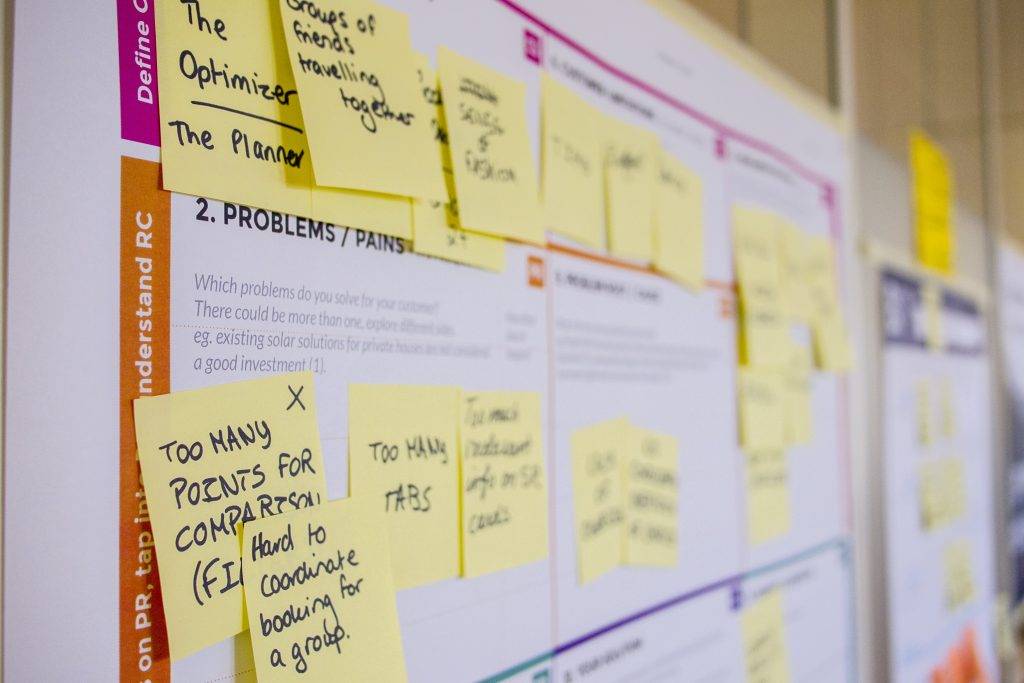
Product Owner Roles and Responsibilities
Product owners are vital members of an agile development team. But just what is the role of a product owner? Answering key questions from developers is one part of the job description.

Product owners are vital members of an agile development team. But just what is the role of a product owner? Answering key questions from developers is one part of the job description.
If you’ve spent any time around software developers — especially the agile variety, you may have heard the term product owner thrown around. But just what is the role of the product owner in app development and how does it differ from a project manager’s roles and roles and responsibilities?
These distinct roles have different sets of priorities. While a project manager pays attention to the day-to-day minutiae of keeping a project on track, a product owner’s role is to take a broader view of the end goals and coordinate between stakeholders and the development team.
One of several product owner roles and responsibilities is to be the liaison between the end-client and the development team. They help facilitate features and change requests throughout development. Product owners are vital members of an agile team and help keep priorities and resources aligned.
In this guide, we dive into the role and offer some tips on how to be effective in the role.
Product ownership as a distinct job description is only about twenty years old. It emerged along with scrum and agile methodologies in the early 2000s. Since then the role has continued to evolve and adapt to new realities.
In agile development, the emphasis of the project is on regular iterations over the course of a project. This helps ensure that the initial goals of the project and the final application match. What you don’t want is to end up with an app that your market doesn’t need.
Product mismatch can happen if the vision is not clear, or is not communicated clearly enough. Part of what agile scrum aims to prevent is exactly this scenario. This is where the product owner role comes in.
Product owners facilitate development by being the main point of contact between the business leaders commissioning the work and the development team carrying it out.
POs have to be decisive as well as knowledgeable about the product — especially who it’s for and how end-users will interact with it. Market knowledge and insider industry practices are just a few of the things product owners need to know and have time to share with developers.

Think of POs as filters between the demands of the business and your development team. Maintaining a list of tasks and change requests that doesn’t bog down a development team is the main challenge.
It’s also essential that product owners have full autonomy to make decisions about what new features or change requests get added to a backlog. Interference from business leaders or other stakeholders can sow confusion and lead to budget overruns, among other negative effects.
Deciding which features to put into a project backlog and prioritizing those tasks in a way that makes sense — and that your developers can manage effectively are fundamental product owner roles and responsibilities.
In addition to backlog grooming product owners are also the main points of contact for developers to ask key questions about the final application. Questions about the app’s target market, user behavior, or your competition are all typical details a product owner will have to clarify.
Here are some of the daily tasks a product owner will have to complete.
One of the first, and perhaps most important responsibilities a product owner has to grasp is the point of the application. What gap the tool will fill in the market and who will use it, in the end, are key details developers will want to know.
Knowing everything there is to know about the app also helps keep priorities straight when it comes time to weed out what’s a must-have feature, a nice-to-have or something to cut out completely.
Of course, knowing the personas and the market gap the app will fill is not enough. Product owners also have to communicate that information to the development team. Having all the right information ready will make development run much more smoothly.
Yet another responsibility of a PO is to be decisive about the product vision. Your developers will need input on the project vision. Be ready to answer questions about the app. In agile, project managers are not able to make big decisions about new features.

So it’s vital that the product owner is there as the main driver behind the project. Translating business goals into clear directions for development teams is also a vital responsibility. Along with that, making sure that there are not too many tasks coming in at once is a key part of product ownership.
Day to day, POs also need to monitor the list of tasks in the queue or product backlog. Product owners have to make a list of required features, prioritize them and push them finally to the development team.
This takes some balance. Obviously, everyone on the client side wants to get their application to market quickly, and before the competition. But making sure that the features your development team can realistically do given the budget takes some skill.
POs have to add enough features in the backlog to keep the project on track while also making sure developers don’t get overwhelmed.
Efficient, well-groomed backlogs ensure teams get work done on time and within budget, that’s why it’s vital that you have a strong, empowered product owner.
Along with the other main responsibilities of a product owner, being available to answer questions is another one. Set up direct communication channels to stay in touch with your development team and be available to them.

There may be insider knowledge or other industry standards that you know well, but that your development team doesn’t. Being there ready to help is part of being an effective product owner.
So what is the role of the product owner? They’re crucial to agile app development. Having effective POs will streamline your development project and keep it within budget. Along with project managers, product owners make sure that goals are aligned and that any questions the development team has are answered.
Deep knowledge of the final application, as well as the target market, are essential details any PO needs to know to be effective. An ability to delegate and prioritize is also vital.
Agile development takes big, complex projects and breaks them down into smaller iterations, making sure the final product is what the end-client wanted in the first place. Product owners are essential to keeping priorities aligned and development on track.
 Hi, I’m Marcin, COO of Applandeo
Hi, I’m Marcin, COO of Applandeo
Are you looking for a tech partner? Searching for a new job? Or do you simply have any feedback that you'd like to share with our team? Whatever brings you to us, we'll do our best to help you. Don't hesitate and drop us a message!
Drop a message